NHL Productions In-House Studio Ops Continue To Grow With Data-Driven Stanley Cup Central Live-Streaming Show
New second-screen YouTube experience offers conversational style, stats driven by the NHL EDGE
Story Highlights
Seven years ago, when Steve Mayer arrived at NHL Productions, his team comprised five people. Today, the league’s chief content officer/EVP has a staff of more than 50 and an in-house studio that cranks out live and quick-turnaround programming on an almost daily basis. The culmination of its efforts this season has been the launch of Stanley Cup Central, a second-screen YouTube experience covering one game per night throughout the Stanley Cup Playoffs, bringing a conversational style to the coverage, and providing deep stats driven by the NHL EDGE puck- and player-tracking system.
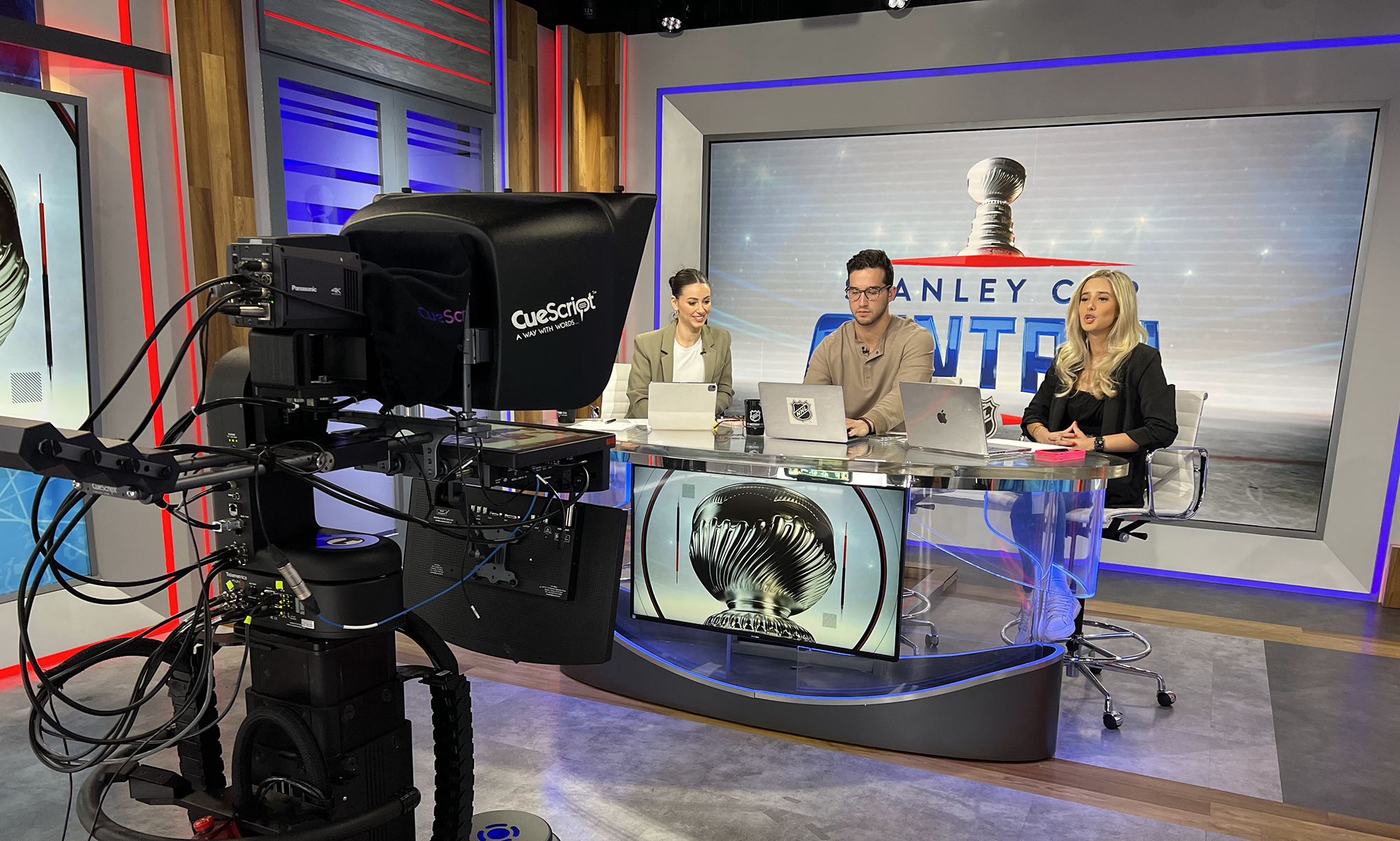
From left: Lauren Jbara, Alexa Landestoy, and Jonny Lazarus host Stanley Cup Central.
“With [Stanley Cup Central], we have several different things we’re trying to accomplish,” says Mayer. “We’re looking to build our YouTube platform, experiment with the second-screen experience, find new ways to tell stories with the NHL EDGE [data], identify and develop new [on-air] talent, and get fans into an environment where they’re interacting and talking to each other in real time. And, maybe most important, we’re looking to establish exactly what we are capable of in this studio. We’ve certainly had studios before but never with the capabilities that this one has in terms of technology.”
NHL EDGE Data Serves as ‘Backbone’ of Stanley Cup Central
During the 2022 Stanley Cup Playoffs, NHL Productions launched a new state-of-the-art studio in its headquarters at One Manhattan West. The studio and accompanying control room made their live-streaming debut with Third Period Live, a second-screen experience on YouTube. Since then, the studio operation has continued to evolve, with the facility producing programming almost every day since January.
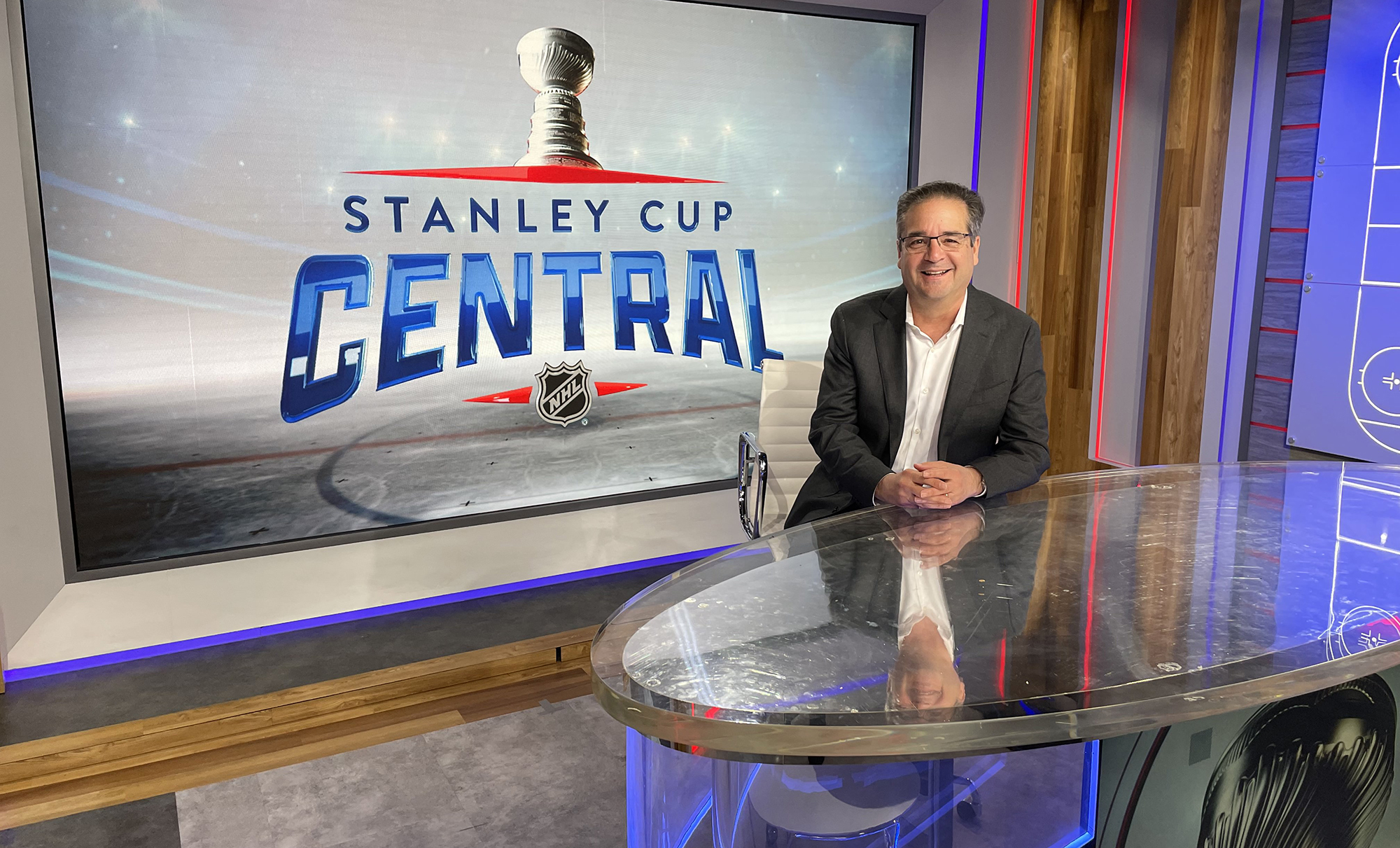
NHL Productions’ Steve Mayer: “Our goal is to create an environment where fans are having a conversation and we just happen to be eavesdropping.”
Since the beginning of the second round at the beginning of May, Stanley Cup Central has emanated live from NHL Productions’ studio on a nightly basis. The show features a constant L-bar graphic providing such statistical data as face-off probability, skating speed, and time on-ice. Betting odds and breakdowns of the betting lines are also displayed prominently.
“The backbone of this show is the data component powered by NHL EDGE puck and player tracking,” says Matt Celli, VP/coordinating director, NHL Studios. “That is what [distinguishes] our show [from] the traditional broadcasts. Hockey is a very fast sport, so it can be challenging to [integrate] deep data in a traditional broadcast. Our goal with [Stanley Cup Central] is to bring that data to the forefront throughout the entire show.”
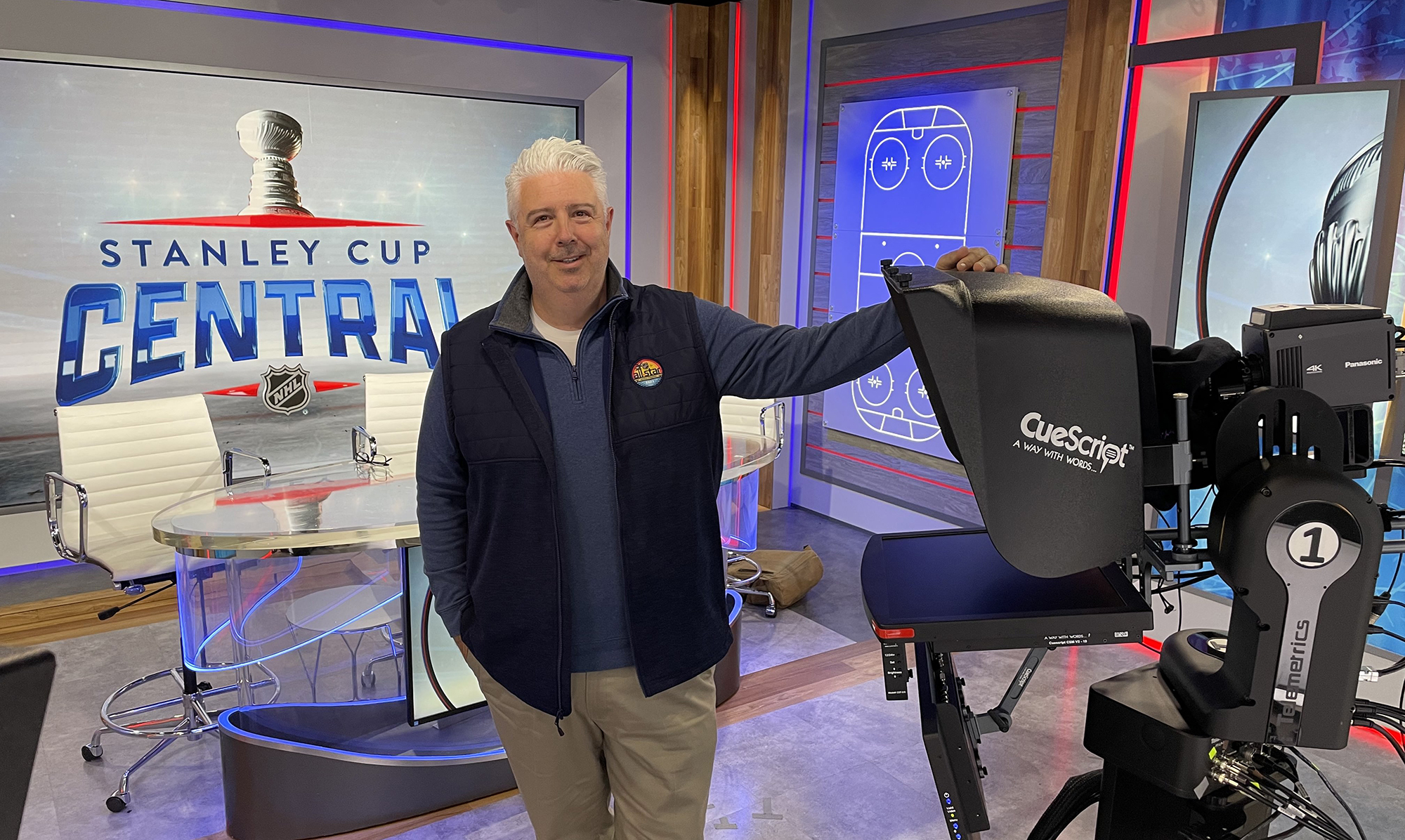
NHL Studios’ Matt Celli oversees operations at the One Manhattan West production center.
The same constant L-Bar graphic is used in videoboard shows at NHL arenas across the continent, but this marks the first time it is being used in a live broadcast.
“We want make that data and information part of the narrative,” says Mayer. “We can now tell stories with NHL EDGE [data] that allow you to understand the game better. Our broadcast partners use that data on occasion, but we want to take it to the next level. The key is being able to not only understand and make sense of the data but also uniquely tell the story of that data. You could put deep data up there all day long, and it could just be meaningless eye candy, but, if you can translate that data into something people understand, that is where it gets really interesting.”
In addition to the L-Bar, Stanley Cup Central incorporates NHL Blockie visualizations and interactive game elements developed with NHL EDGE data and Beyond Sports technology. This technology was first used by the NHL during ESPN’s live, animated Big City Greens Classic broadcast in March.
“We are looking to lean heavily into those Blockie data visualizations,” says Celli. “We have a lot of the same technology that ESPN employed [for the BCG Classic], where we’re able to cut all 40 virtual cameras in the system. We’ve found it works best in replay packages. [For example], during a key play, we’ll do a couple of traditional replays off an EVS [server] like people would see [in the TV broadcast], and then we will choose Blockie angle and roll that in to finish it off. The chat seems to love it, which is great, and it gives us a lot of flexibility since we don’t have [access to isolated camera shots].”
Stanley Cup Central Provides ‘Sports Bar’ Feel — Both in the Studio and Remotely
Each night, a rotating cast of hosts — Lauren Jbara, Alexa Landestoy, Jonny Lazarus, NHL Fantasy reporter Anna Dua — lend their insights and banter throughout the game, as well as during pre/postgame coverage. Longtime NHL Insider Pierre McGuire also joins each night to offer analysis and commentary. In addition to game analysis, hosts discuss the latest news and happenings around the league and chat with fans live in the YouTube comments section.
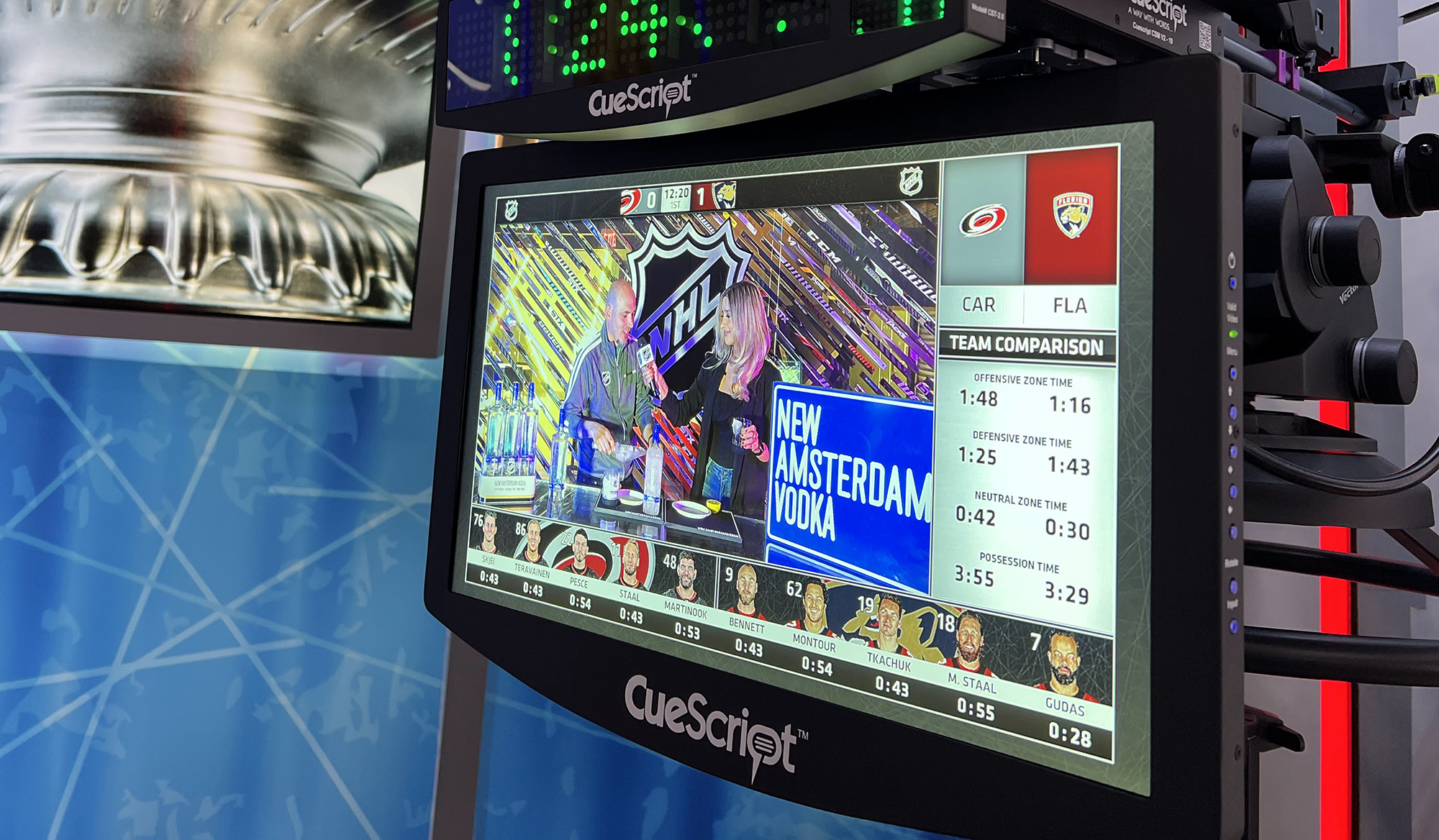
NHL Productions deploys BitFire to bring in remote feeds for productions like Stanley Cup Central.
“We want [viewers] to feel like they’re hanging out at a sports bar watching the game with their friends,” says Mayer. “We want them to be engaged while the game is going on but also talking amongst themselves. Our goal is to create an environment where fans are having a conversation and we just happen to be eavesdropping.”
In addition to the in-studio elements, a variety of special guests — influencers, media personalities, NHL alumni, celebrity hockey fans — appear remotely during the show. NHL Productions deploys BitFire as the transmission backbone for these remote video feeds.
“We have guests from all over the country, from celebrities to talent to former players and coaches to influencers,” notes Celli. “It has become a very big part of the show. So having a reliable managed transmission process was important to us. Thankfully, BitFire checked all the right boxes.”
As Studio Ops Evolve, Programming Slate Set to Grow Next Season
Since debuting in May 2022, NHL Productions’ studio has dramatically increased the amount of programming emanating from Hudson Yards for both its YouTube channel and, occasionally, for NHL Network. Programming includes daily long-form YouTube shows like NHL Puckline and NHL Mashup; shot-form programming, such as interviews with Commissioner Gary Bettman and other key NHL figures; and tentpole-event productions, such as the 2023 NHL Regular Season Awards Show.

The control room in action during Stanley Cup Central
“The studio is a great resource to have, whether it’s short-form or long-form shows,” says Mayer. “As we look toward next year, we’re developing a daily show that will originate out of our studio that we’re very excited about. This was our first full year with the studio because we started in the postseason last year, so we had to work a lot of things out and try out all the bells and whistles. Next year, we think we’re going to do way more; we’re going to push it as far as we can go.”
The studio space, designed by Jack Morton Worldwide and fabricated by Black Walnut, features a 12- x 7-ft. LED display, five vertical 65-in. LED displays, and 12 horizontal monitor walls. The NHL has deployed two Panasonic PTZ box cameras, two Panasonic robos on the ceiling, and a Telemetrics OmniGlide Robotic Roving Pedestal.
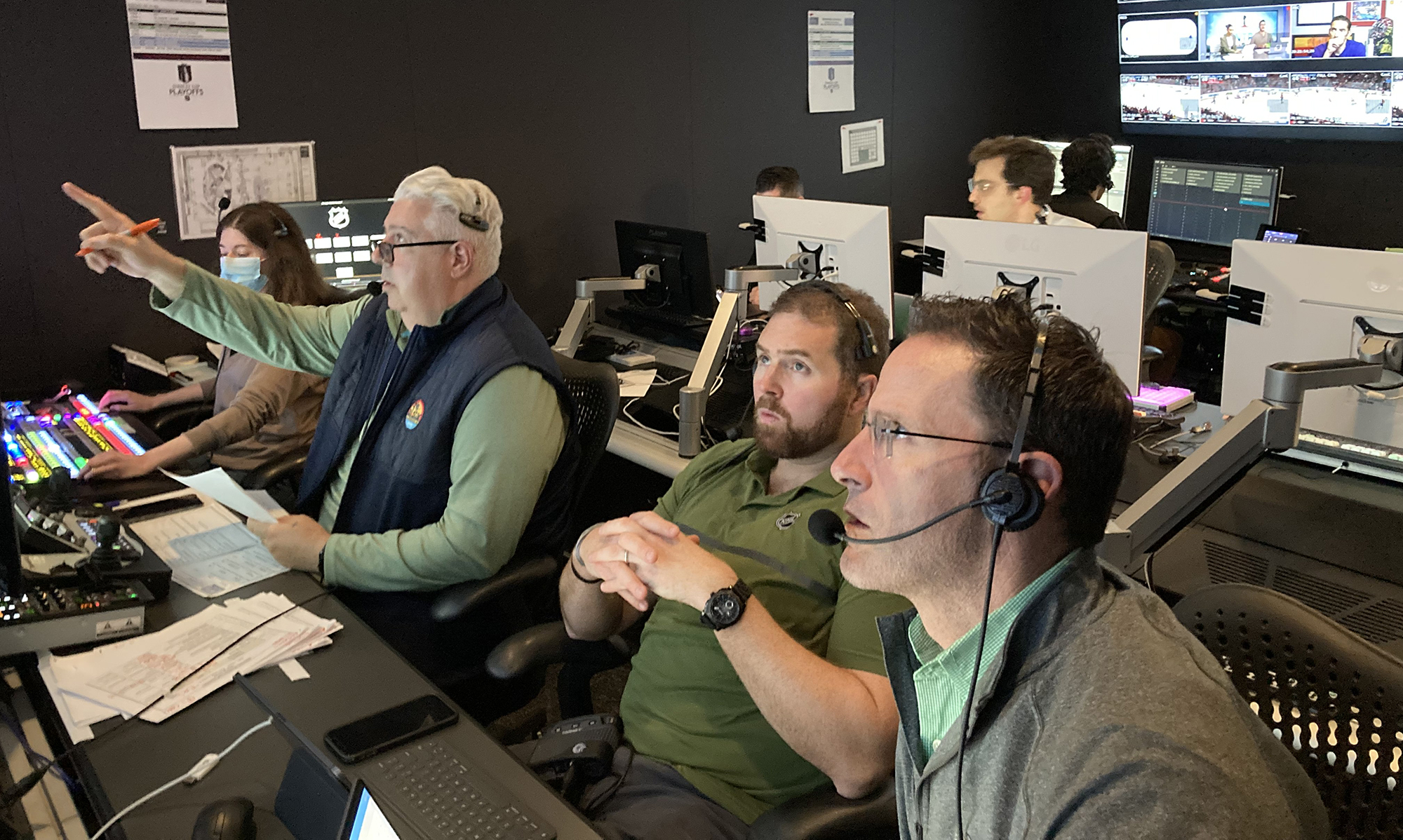
NHL Studios’ Matt Celli calling the shots at the front bench during a Stanley Cup Central production
The SMPTE ST 2110–based facility was integrated by NEP and is built around an EVS Dyvi software-defined production switcher and Lawo IP router. Other key gear includes an EVS XS 12-channel (eight in/four out) replay server, two Ross Xpression CG/graphics systems (four output channels total), and Clear-Com intercoms.
Running the show are Joe Ciancarelli, manager, control room and technical operations; Dennis DePrimo, manager, broadcast engineering; and Taishon Black, senior director, broadcast engineering.
“Those three guys are the heart and soul of this place in terms of infrastructure and operations,” says Celli. “Without people like that, places like this simply don’t work. At this point, it’s a well-oiled machine. Everyone, from talent to production to engineering and operations, is on the same page and working as one unit. In terms of the future, Steve [Mayer] has a robust plan for content, and our job is to be ready for whatever he throws at us.”
